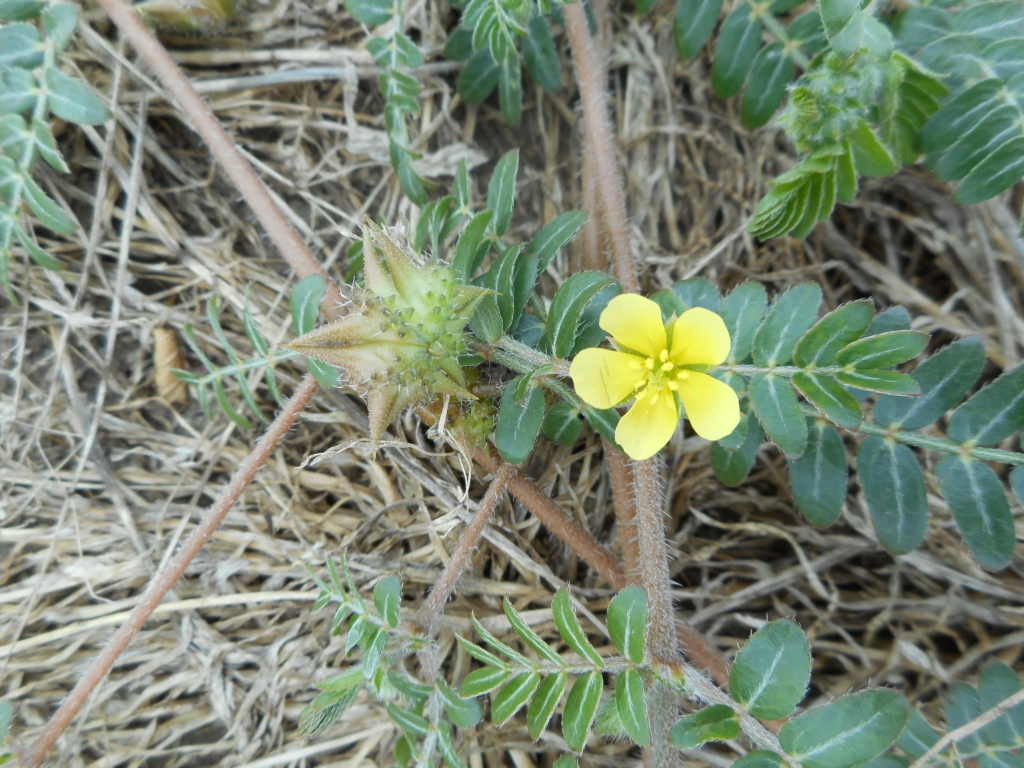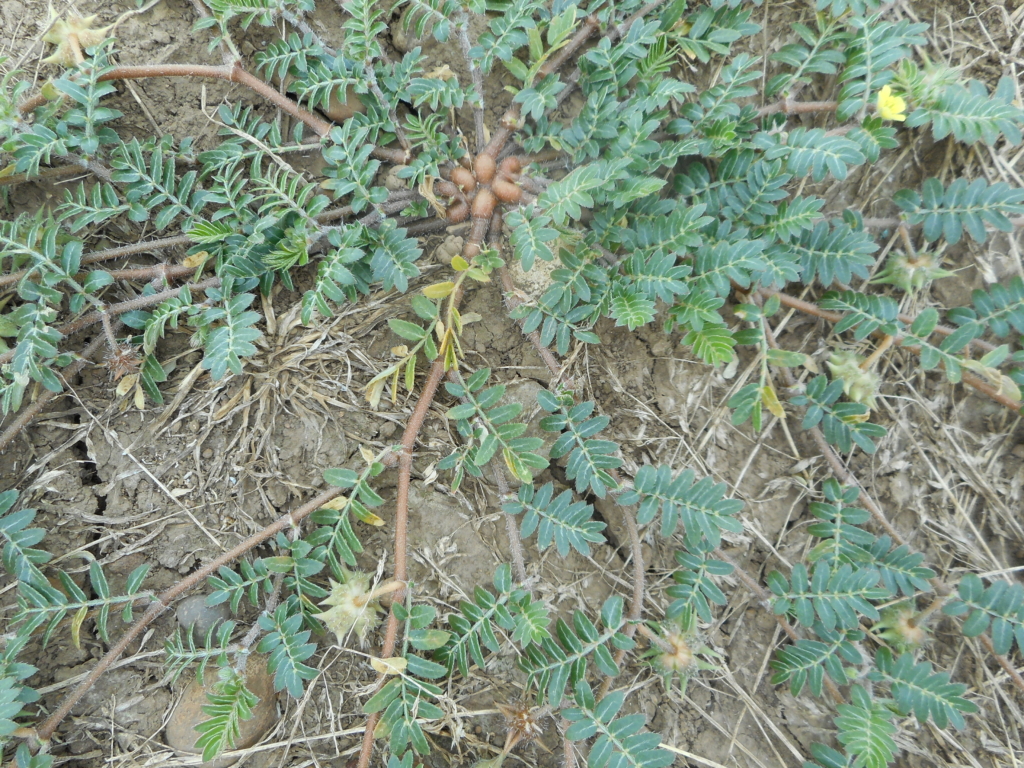Puncturevine
Tribulus terrestris
Plant Description
This summer annual has small yellow 5-petalled flowers and pinnately compound leaves. The fruit is a sharp woody burr with spines sharp enough to puncture tires.
Plant Details
| Life Forms | |
|---|---|
| Habitats | |
| ODA Listing | |
| Soil and Moisture Conditions | |
| Suggested Actions | |
| Shade Preference | |
| Mature Height | low-growing with stems up to 6 feet long |
| Distribution | widespread in eastern, southeastern, and Central Oregon. Increasing across the Willamette Valley. |
| Control | Mowing is not recommended. May be hand pulled prior to seed set. Be sure to wear gloves and remove burrs found in the area. Cover area with at least 3 inches of mulch to block light. |
| Disposal Methods | Dispose of plants in sealed plastic bags and send to the landfill, do not discard with yard debris. |
| Reproduction and Spread | Reproduces by seed, with a typical plant producing 200-5,000 seeds. Seeds are dispersed by sticking to tires, shoes, animals, etc. |
| Introduced | Introduced to the Pacific Northwest from Europe in 1924, possibly as a wool contaminant. |
| Look Alikes | Purslane (Portulaca oleracea) and Spotted Spurge (Euphorbia maculata) |
| Impact | The sharp burrs of this plant can cause injury and damage equipment. Puncturevine is toxic to sheep and its deep taproot allows it to outcompete tree and field crops for water and nutrients. |
| More Info |
© Marion Soil and Water Conservation District. All Rights Reserved.


